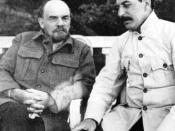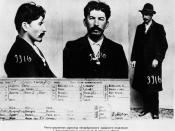Collectivisation is a policy of creating larger farms by combining small farms with each other. This way the farmers would farm together rather than individually. The reasons for collectivisation were for the soviet agriculture, the food was needed to feed the workers in the cities, NEP (New Economic Policy) was not working for Russia, cash crops were needed. In the 1930s coollectivisation was not an economic success.
In 1927 the Soviet agriculture (1) was still old fashioned and it was inefficient. There was no machinery to work with on the farms. The farmer had to use sickles just to harvest grain and it took alot of time. The farms were too small and they had less animals except for the farms that belonged to the Kulaks. Their farms had more animal and they were much begger. But most of the peasant farms, they could not grow a lot of food to feed a lot of workers.
That is why they had to be combined with other farms it is known according to Reed (3) that the peasants had to raise Russia's basic food supplies, numbered about 85 per cent of the whole population. Stalin himself said, "Agriculture is developing slowly, comrades. This is because we have about 25 million individually owned farms. They are the most primitive and undeveloped form of economy We must do our utmost to develop large farms and to convert them into grain factories for the country organised on a modem scientific basis." (3). He believed himself that, the country's economy was not in good condition and in order for it to change economically for the better, collectivisation was the answer.
There was food needed for the workers in the cities. The food needed to feed the workers was to suppor Stalins...


